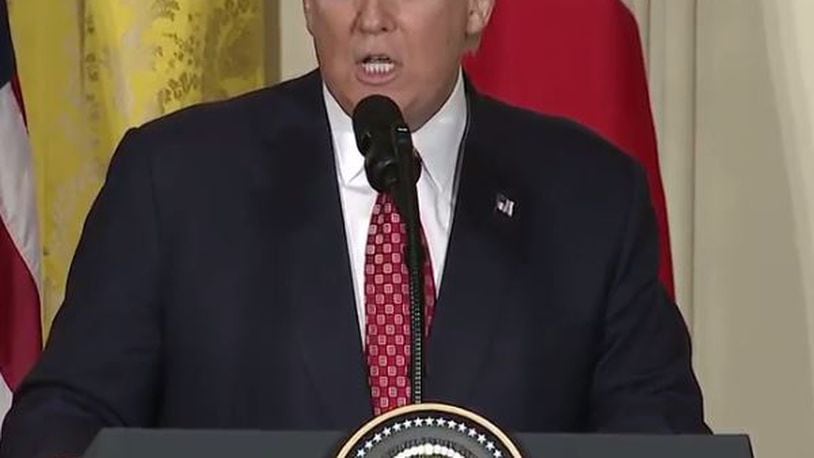"The last administration had so many carve outs for who could be and who couldn't be adjudicated," Spicer said, as he argued that immigration and border agents would now have much more freedom to deal swiftly with those in the U.S. illegally, a point driven home by today's memos.
"The surge of illegal immigration at the southern border has overwhelmed federal agencies
and resources and has created a significant national security vulnerability to the United States," the new guidance states, as it details different priorities for enforcement, and envisions more deportations of those in the U.S. illegally.
One main change is ending "catch and release," which basically means no longer will immigrants be detained in the U.S., and then released, while they wait for a hearing at a future date before an immigration judge.
Critics say too often, those people just melt away and stay in the U.S. illegally, never showing up at their hearing.
"Such policies, collectively referred to as "catch-and-release" shall end," the memo reads.
The plan authorizes the hiring of 5,000 new border patrol agents, and 10,000 immigration agents.
The new guidelines make clear that people in the U.S. illegally who have a criminal record, will be the first people deported.
"Criminal aliens have demonstrated their disregard for the rule of law and pose a threat to
persons residing in the United States. As such, criminal aliens are a priority for removal," one of the memos states.
Here is the guidance on who should be prioritized for deportation:
"Department personnel have full authority to arrest or apprehend an alien whom an immigration officer has probable cause to believe is in violation of the immigration laws," the new guidance states.
The new guidance does not reverse some of the controversial executive actions on immigration taken by President Obama during his time in office, as it leaves in place Obama enforcement memos from 2012 and 2014 that deferred the threat of deportation against immigrant "Dreamers."
"With the exception of the June 15, 2012, memorandum entitled "Exercising Prosecutorial Discretion with Respect to Individuals Who Came to the United States as Children," and the November 20, 2014 memorandum entitled "Exercising Prosecutorial Discretion with Respect to Individuals Who Came to the United States as Children and with Respect to Certain Individuals Who Are the Parents of U.S. Citizens or Permanent Residents," all existing conflicting directives, memoranda, or field guidance regarding the enforcement of our immigration laws and priorities for removal are hereby immediately rescinded," the new guidance states.
But a full review of the immigration guidance would suggest that if any of those "Dreamers" run afoul of the law in the United States, then they could be deported.
The enforcement memos also seem to set the table for possible future action against Mexico, as it directs the feds to "identify and quantify all sources of direct and indirect Federal aid or assistance to the Government of Mexico."
There was no language in the memos on using the National Guard to help with border enforcement, as had been reported last Friday by the Associated Press - but if you look at the details of the draft memo released to the AP, the fine print in that section is almost exactly the same in the memo released today, but the National Guard material has been taken out.
About the Author
